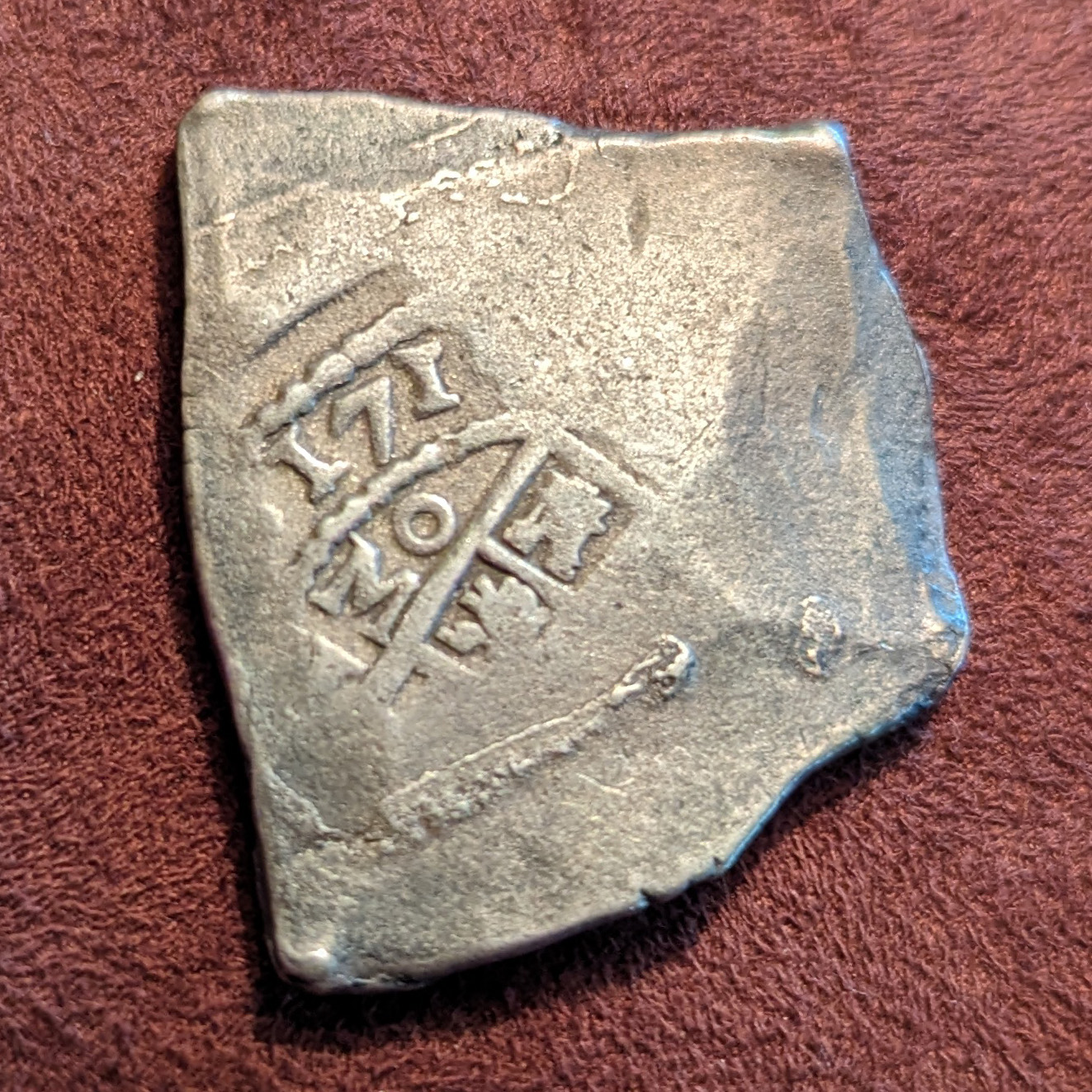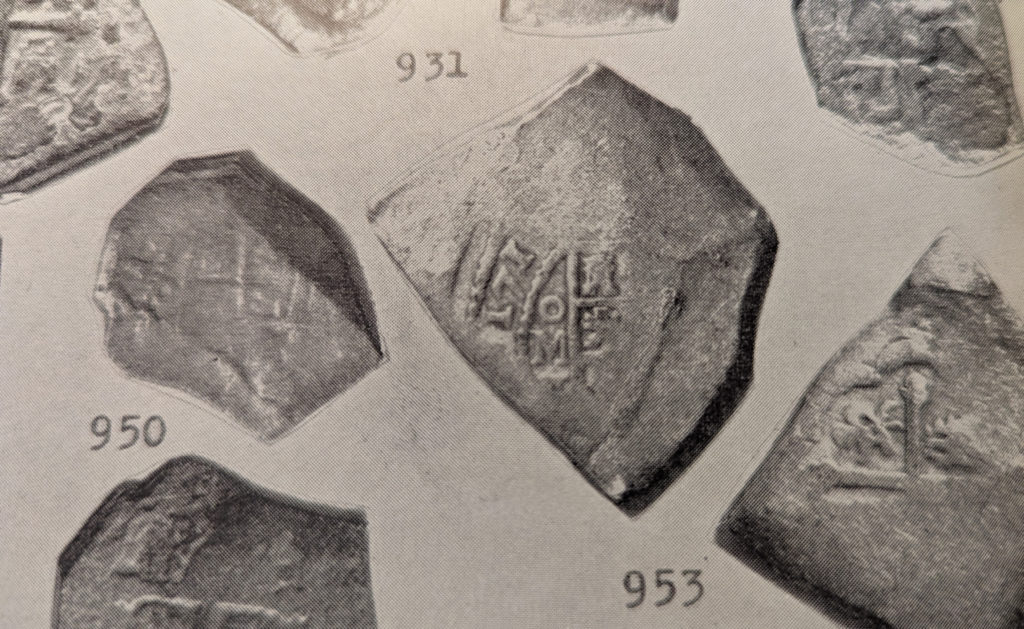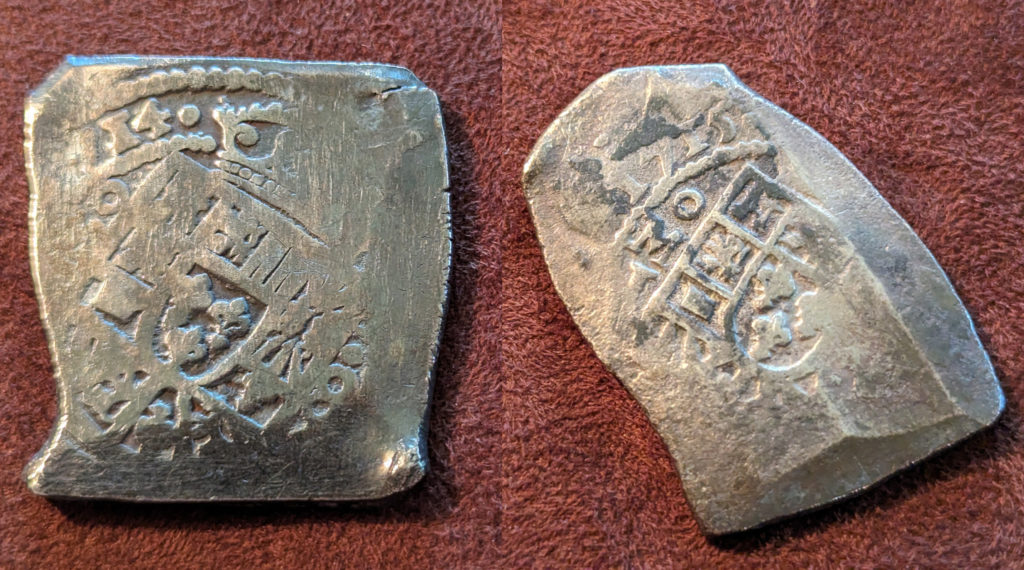Most collectors of Spanish colonial coins from the 1715 Fleet are dedicated followers of major auction houses that feature 1715 Fleet material. In the early 1970’s one such auction house was Schulman Coin and Mint, Inc. of New York. There were two major auctions of 1715 Fleet gold and silver coins handled by Schulman, one in November 1972 and again in December 1974. This article is about a coin featured in the 1974 auction as lot # 953. Specifically, it was a silver eight reales produced at the Spanish colonial mint in Mexico City.
Our subject coin is impressive due to the extremely strong strike on the obverse date (171x) and the mintmark (OM). The assayer (J) is only partially visible. Looking at the coin in hand the strong strike (partial as it was), the interesting shape, the nearly full weight (26.5 grams), and the smooth surfaces with minimal corrosion make for a magnificent piece. The only feature that was lacking was a clear fourth digit. Unlike some coins where portions of a date are completely missing, this specimen had a digit that was there but was not apparent. Such digits require interpretation to be identified, which leads us to our story.
At auction this coin was listed as a 1714 dated piece with a weak fourth digit. It sold for $75.00.
Other pieces that had a 1715 date sold for twice as much or more. Coins with a full, or even partial 1715 date’ were more desirable because 1715 was the year in which the Fleet was lost.
After this coin was purchased in 1974 it changed hands. A subsequent owner who purchased the coin believed that the coin was misidentified as a 1714 piece. He thought that it was a 1715 piece. Misidentifying the date on a silver reales from the Fleet was not uncommon given the condition of some of these coins.
When we first saw the coin, we could immediately see that the faint last digit of the date was not a “4”. To confirm our suspicions, we compared the last digit of the subject coin to other coins dated 1714 and 1715 to see if a comparison might help to establish the actual date of the subject coin.
If one looks at the dates on these coins, it can be seen that the “4” of the 1714 and the “5” of the 1715 are geometrically different. The “4” is more linear and the “5” has more curvature. By comparing these three coins up close a better picture emerges.
Note that by observing the digits together (above) one can see that the weak fourth digit of our subject coin takes on the appearance of a “5” and not a “4”. Note that this ghost digit has a curved and hook-like shape not at all like the linear features of a “4”. Also, by looking at the coin from different angles the faint outline of a “5” can be discerned.
It can take time to confirm dates on some sea-salvaged coins. The ocean is not kind to silver which makes it difficult to identify dates on a coin of this nature. However, it makes sense to study these coins for dates. A date or a digit may not jump out at you but may be there for those who take the time to look.




